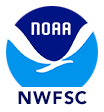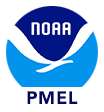Forecast Origin Dates
J-SCOPE forecast results for the simulation beginning in January of 2022 are shown through a series of figures below. In the first figure, each panel represents ensemble averaged anomalies of two month averages for the region. In the second figure, the panels depict the relative uncertainty from the ensemble for the same time periods.
At the beginning of the forecast, bottom oxygen on the outer shelf is forecast to be lower than the climatology, and as the forecast progresses by the beginning of the upwelling season (May - June), the low bottom oxygen anomalies cover the entire continental shelf. The low oxygen anomalies weaken coast-wide throughout the upwelling season so coastal waters in Oregon approach climatology by the end of the upwelling season (July - August). The relative uncertainty increases over the course of the upwelling season, with uncertainties over the shelf ranging from ~10-20% (and slightly higher nearshore in southern Oregon) at the beginning of the upwelling season (May - June), to approximately 50% for coastal waters in both Washington and Oregon by the end of the upwelling season (July - August).
Forecast bottom oxygen concentrations (mg/l), averaged over three ensemble members for each month of the upwelling season, indicate declines in oxygen concentrations over the course of the forecast for both Washington and Oregon, with hypoxia (O2 < 2 mg/l) prominent over much of the Oregon shelf and near the Washington shelf break as early as May. Hypoxia is forecast to expand to much of the Washington shelf by July including regions of the Olympic Coast National Marine Sanctuary and the Ćháʔba· mooring.
Hypoxia extends upward into the water column as well. The percentage of the water column that is forecast to experience hypoxia (O2 < 2 mg/l) is a metric for this phenomenon. By combining this forecast with the forecast for bottom hypoxia (above), we can get an idea of how extensive hypoxia may be in the three-dimensional ocean habitat. Early in the upwelling season, hypoxia is forecast to occupy a small percentage of the water column over the entire modeled region (<10%). In June, shelf waters in Oregon begin to experience more hypoxia (~20%). Over the remainder of the upwelling season, hypoxia expands vertically coast-wide, with particularly high volumes forecast for the Oregon shelf (up to 50%) in August and September and the Washington shelf experiencing lower volumes of hypoxia. All together, these figures suggest that the widespread hypoxia forecast above is limited to near bottom habitats for the majority of the Washington coast during the upwelling season while hypoxia expansion into the water column is more extensive in Oregon.
Time series of bottom oxygen from the Washington coast near one of the Olympic Coast National Marine Sanctuary (OCNMS) moorings at Cape Elizabeth (site CE042), from NH-10 mooring off of Newport, Oregon, and from the Ćháʔba· mooring off of La Push, Washington, are shown for each member of the ensemble. The model forecasts that hypoxia will most likely develop at all three moorings earlier than the climatological onset of hypoxia (green).
Finally, climatological cross-sections from the Newport Line in Oregon (44°N) and the Grays Harbor Line in Washington (47°N) are compared to the forecast average of the ensemble members during the summer upwelling season (May - August). In both Oregon and Washington, the forecast projects that the oxygen concentration for the upwelling season of 2022 will be lower than the climatology on both the shelf and at deeper depths. The largest negative anomalies are forecast to occur between the surface and ~300 m depth in both Oregon and Washington.
The emergence of anoxia in the model in late summer is caused by a bias associated with the lack of relaxations in the winds (found to be important in a paper by Adams et al, 2013) in the Climate Forecast System input files as well as a bias in the shortwave radiation (see 2013, Year in Review). The model does have skill in predicting the emergence and severity of hypoxia, while it is biased low for these reasons. Given the difficulty in predicting the fall transition in prior forecasts (see 2013, Year in Review), the forecast for low oxygen levels well into August is highly uncertain.
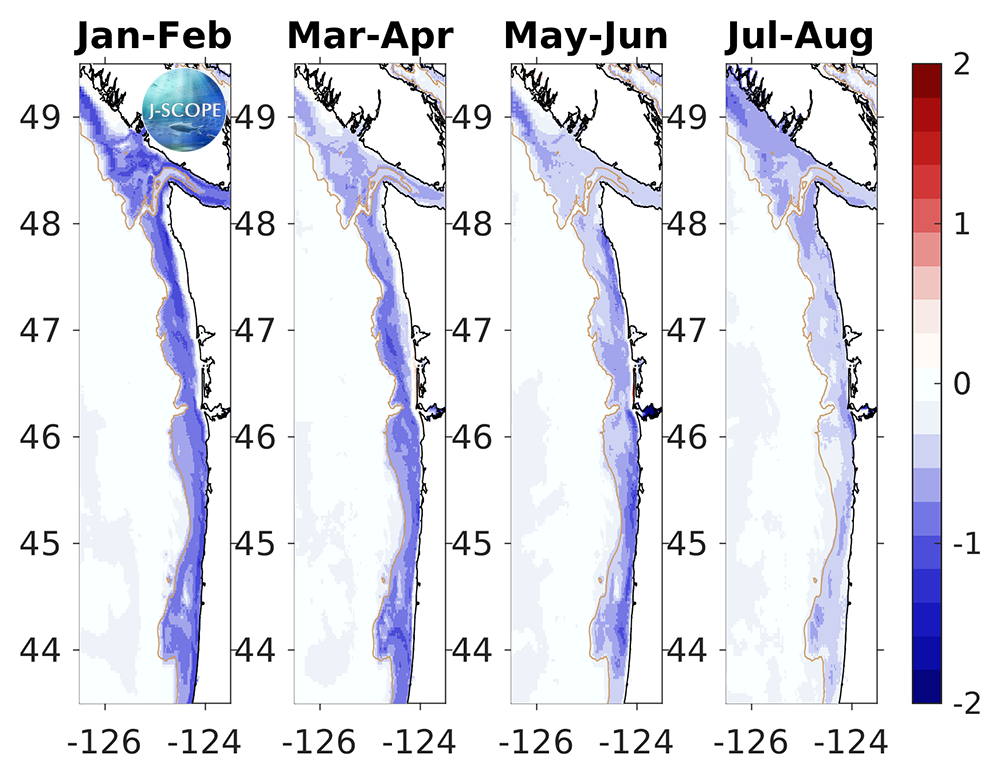
The modeled region bottom oxygen (ml/l) anomaly averaged over all three ensemble members and in time for (from left to right) January - February, March - April, May - June, July - August.
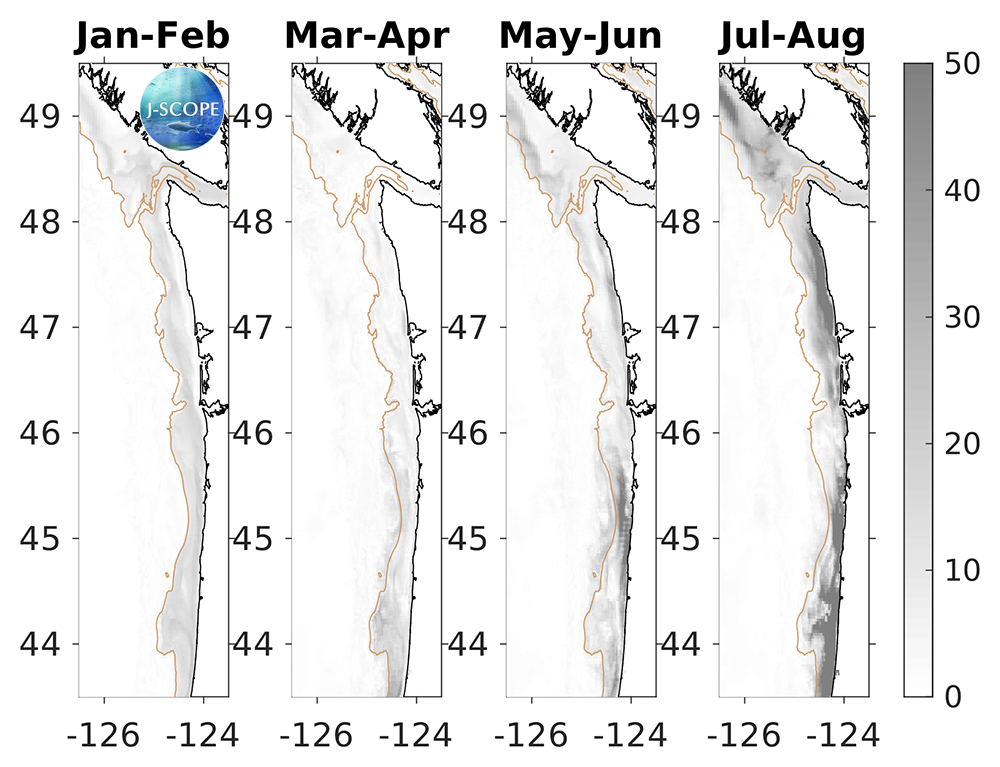
The relative uncertainty in percent for the modeled region bottom oxygen values averaged in time for (from left to right) January - February, March - April, May - June, July - August. The relative uncertainty is defined as the standard deviation of the ensemble divided by the mean of the ensemble and is reported as a percentage of the mean.
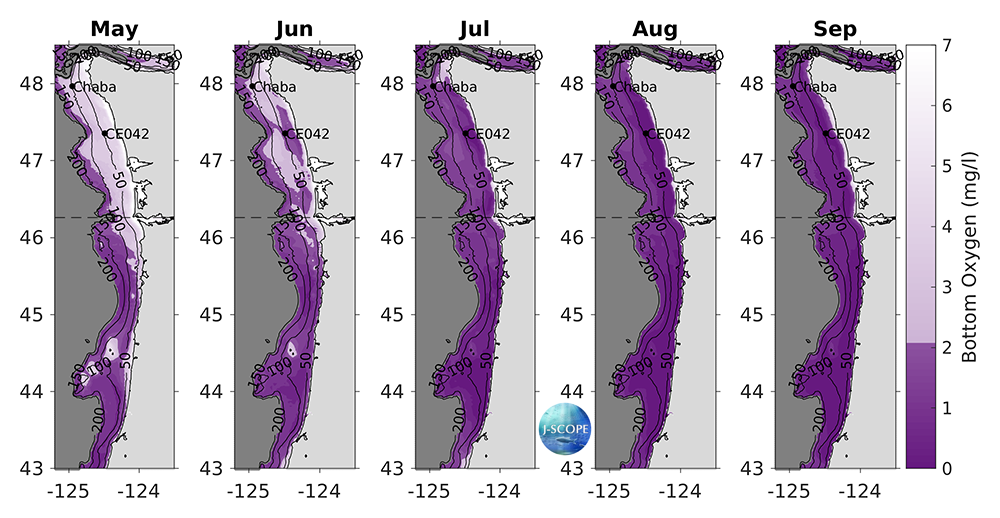
The modeled region bottom oxygen (mg/l) averaged over all three ensemble members and in time for (from left to right) May, June, July, August, and September. Hypoxia (O2 < 2 mg/l) is shown in dark purple, land is shown in light grey, and offshore areas are shaded dark gray. The black dashed line indicates the boundary between Washington and Oregon waters. Black contours indicate bathymetry on the shelf. Two mooring locations are plotted for reference (Ćháʔba·, CE042).

The modeled region water column hypoxia (%) averaged over all three ensemble members and in time for (from left to right) May, June, July, August, and September. Land is shown in light grey, and offshore areas are shaded dark gray. The black dashed line indicates the boundary between Washington and Oregon waters. Black contours indicate bathymetry on the shelf. Two mooring locations are plotted for reference (Ćháʔba·, CE042).
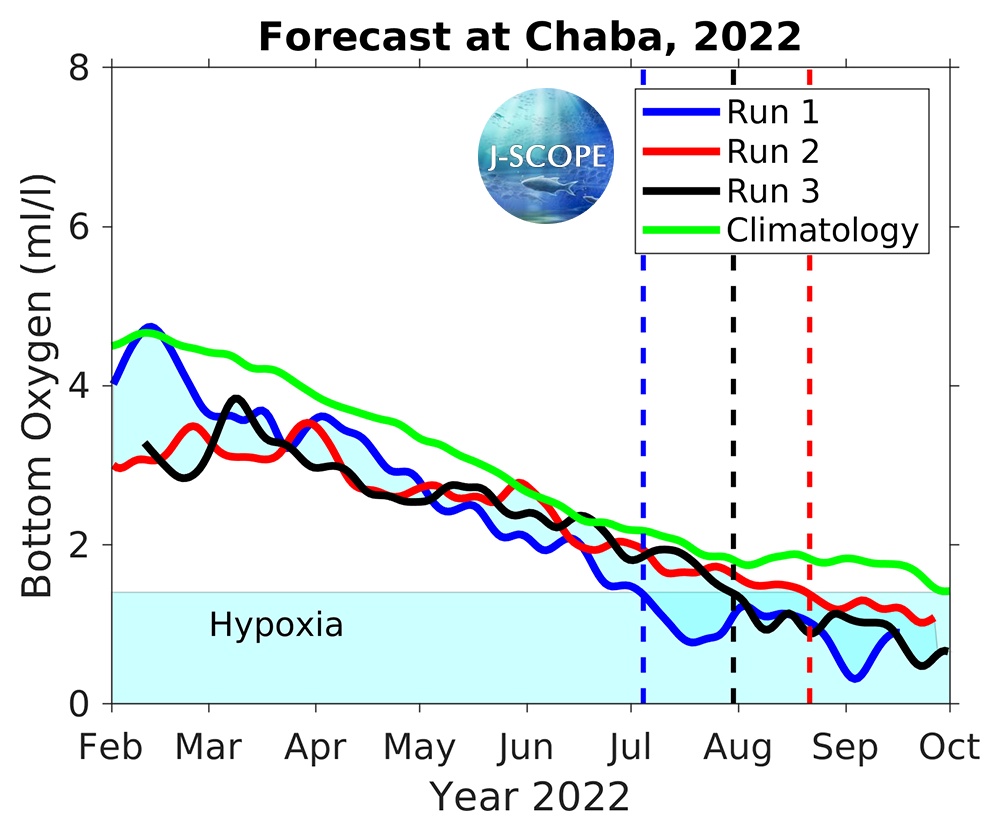
Time series for bottom oxygen at the Ćháʔba· mooring (~48°N) for each of the three ensemble members. Hypoxia is outlined by the blue region on the plot. The timing of each run’s onset of hypoxic conditions for more than 8 days is identified by the vertical dotted lines. Climatologically, there is no hypoxia at the Ćháʔba· mooring.
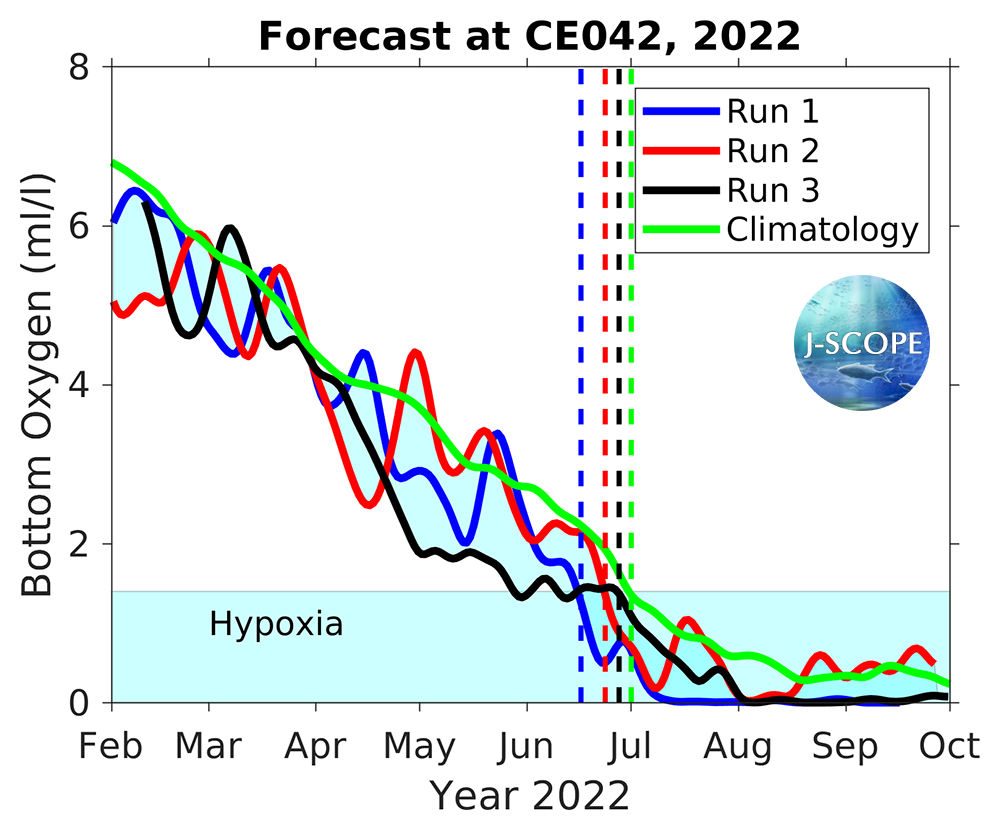
Time series for bottom oxygen at one of the Olympic Coast National Marine Sanctuary Moorings (CE042, ~47.5°N) for each of the 3 ensemble members. Hypoxia is outlined by the blue region on the plot. The timing of each run’s onset of hypoxic conditions for more than 8 days is identified by the vertical dotted lines, with the green line indicating the climatological timing.

Time series for bottom oxygen at the NH-10 mooring in Oregon (~45°N) for each of the three ensemble members. Hypoxia is outlined by the blue region on the plot. The timing of each run’s onset of hypoxic conditions for more than 8 days is identified by the vertical dotted lines, with the green line indicating the climatological timing.
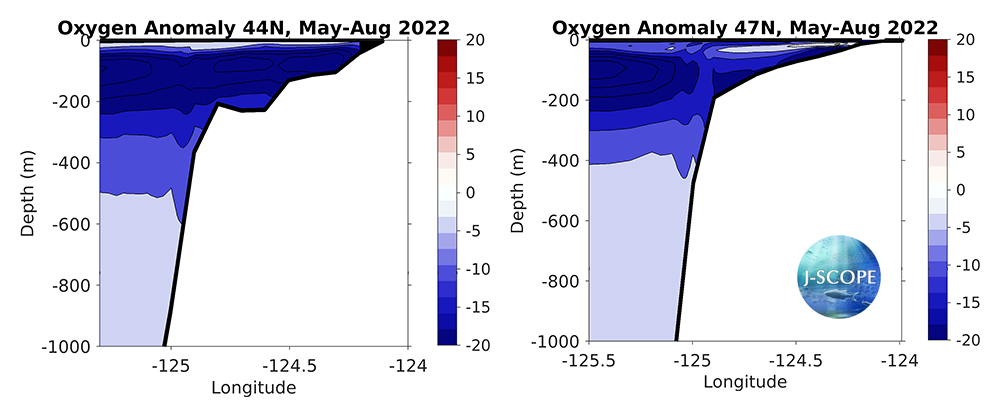
The modeled cross-section from the Newport Line off Oregon (left, 44°N) and the Grays Harbor Line off Washington (right, 47°N), averaged over all three ensemble members, and averaged over the summer upwelling months (May - August).



